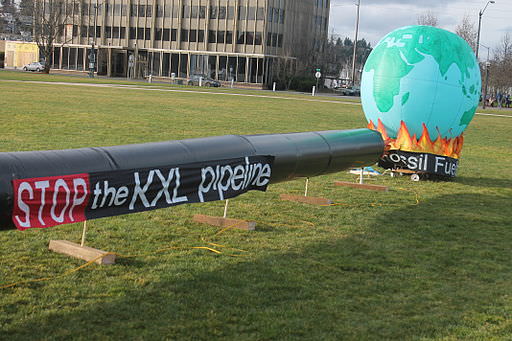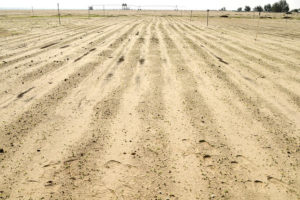Tar Oil Pipeline’s Hidden Pollution Danger
European researchers say a 2,000-mile pipeline designed to carry controversial tar sands oil from Canada to the southern U.S. may lead to much more pollution than previously calculated.
By Alex Kirby, Climate News NetworkThis piece first appeared at Climate News Network.
LONDON — The oil industry has high hopes of the US$5.4 billion Keystone XL pipeline, which on completion is planned to carry crude oil from Canada’s tar sands in Alberta to refineries more than 2,000 miles away in Texas.
With President Barack Obama saying he will approve Keystone only if it “does not significantly exacerbate the problem of carbon pollution”, the pipeline’s future is seen by many inside and outside the US as an acid test of his resolve to tackle climate change.
But in a report that questions US State Department calculations of Keystone’s impact, researchers in Europe say it could increase carbon emissions by much more than anyone has so far calculated.
Emissions increase
The research team, from the Stockholm Environment Institute (SEI), says the pipeline could increase world greenhouse gas emissions by as much as 121 million tons of carbon dioxide a year — more than four times higher than the State Department’s estimated total of 30 million tons at most.
The official figure, the SEI says, ignores the fact that the extra oil refined once the pipeline is working will cause prices to fall by about $3 a barrel, increasing consumption and, with it, carbon emissions. The SEI report is published by the journal Nature Climate Change.
To put the possible 121 million ton figure in perspective, the total amount of CO2 emitted globally in 2013 was 36 billion tons.
The American Petroleum Institute said the study was irrelevant because the tar sands would be developed anyway and oil would be transported to the southern refineries by rail if not by pipeline.
But Ken Caldeira, an atmospheric scientist at the Carnegie Institution for Science’s Department of Global Ecology in Washington, while agreeing that the total emissions increase is small, said the concern was more about the idea of boosting emissions than the degree of change.
Tar sands arouse vehement opposition from environment groups and from many communities in Alberta.
Concerns about exploiting the sands include the impact on health and safety, water resources, air pollution and soil damage. Beyond that, some analysts are increasingly arguing that the world cannot afford to burn most of its fossil fuel reserves (including unconventional oil, such as that from tar sands) if it is to avoid catastrophic climate change.
Oil prices
The authors of the SEI study, Peter Erickson and Michael Lazarus, found that, for every barrel of increased production, global oil consumption would increase by 0.6 barrels because of the resulting fall in world oil prices.
Taking other variables into account, they calculated that the net annual impact of Keystone XL could range from virtually nothing to 121 million tons of CO2 equivalent — a spread much wider than that found by the State Department, which did not account for global oil market effects.
“The key message is that the oil market impacts of Keystone XL could be significant — and have an emissions impact four times greater than the US State Department found,” Erickson told Responding to Climate Change, a London-based news and analysis website.
“That also suggests that more of this type of analysis — analysing the possible market effects of other fossil fuel infrastructure projects — could be warranted, as they could have similar effects”.
Your support matters…Independent journalism is under threat and overshadowed by heavily funded mainstream media.
You can help level the playing field. Become a member.
Your tax-deductible contribution keeps us digging beneath the headlines to give you thought-provoking, investigative reporting and analysis that unearths what's really happening- without compromise.
Give today to support our courageous, independent journalists.






You need to be a supporter to comment.
There are currently no responses to this article.
Be the first to respond.